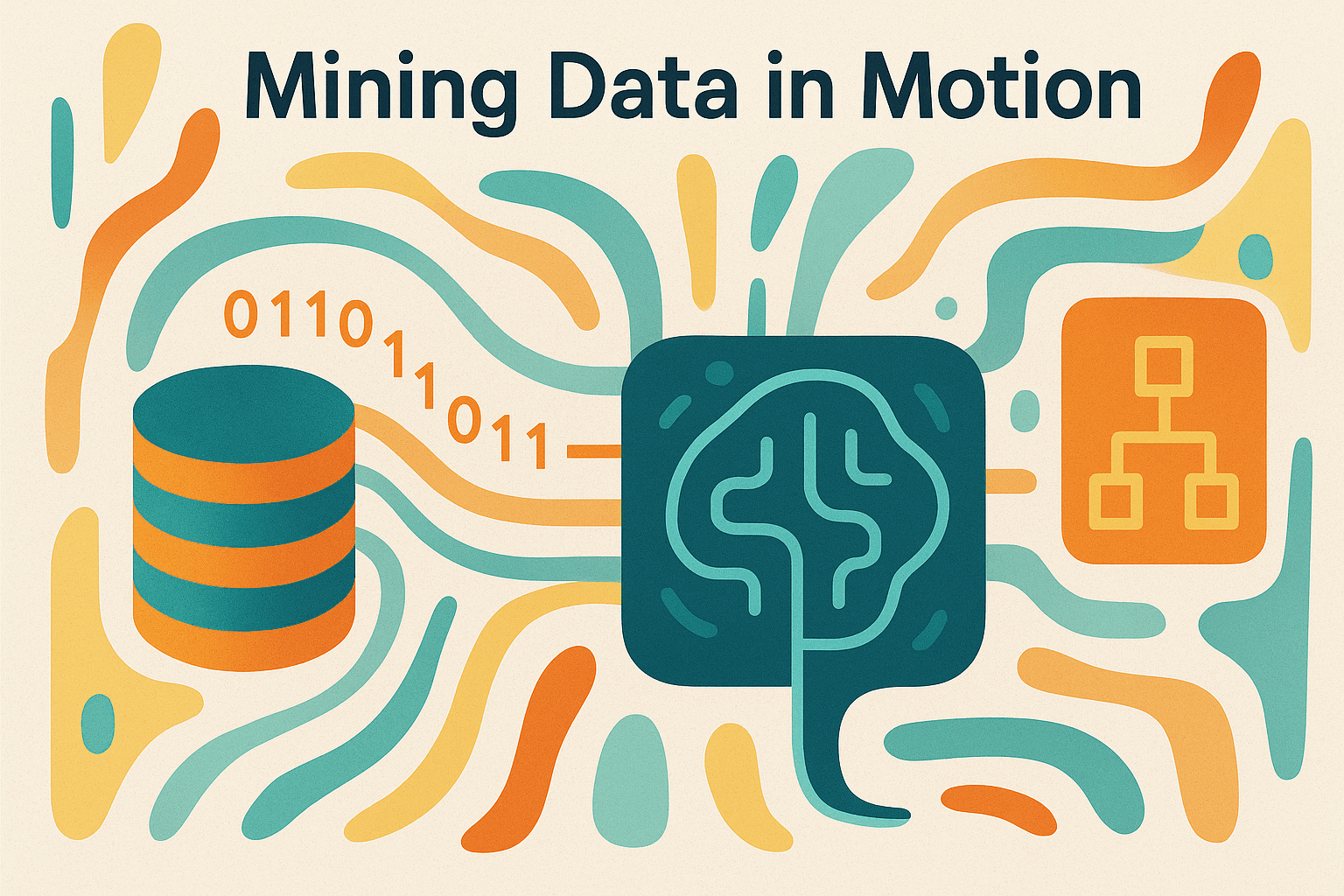Mining Data in Motion: Where Data Mining Meets Incremental Learning
This article explores the convergence of data mining and incremental learning, explaining how the fusion of these techniques enables real-time intelligence in an era where data never stops moving. It highlights key benefits like handling concept drift, scaling efficiently, and enabling autonomous systems. Real-world applications span industries from IoT and finance to cybersecurity and healthcare, emphasizing that adaptive learning systems are shaping the future of automation and intelligent analytics.

Mining Data in Motion: Where Data Mining Meets Incremental Learning
Data mining has long been at the heart of extracting knowledge from information. But as the world shifts from static datasets to continuous data streams traditional mining techniques face a fundamental limitation: they were built for data that stays still.
Today, data doesn’t wait. It flows.
Enter incremental learning, a powerful evolution in machine learning designed to learn from data as it arrives, continuously updating insights rather than retraining from scratch.
This post explores the intersection between data mining and incremental learning, and why their convergence defines the future of intelligent systems.
From Static Datasets to Dynamic Reality
Traditional data mining operates under three key assumptions:
- Data is available upfront
- Models train offline
- Patterns remain stable over time
These assumptions crumble in the modern world. Consider:
Streaming industrial sensors detecting faults in real time
- Security systems identifying new cyber threats
- Financial systems responding to market fluctuations
Customer behavior changing minute to minute online
In each case, insights created yesterday may already be outdated.
Static mining discovers knowledge — incremental learning keeps it alive.
What Is Incremental Learning?
Incremental learning is a machine learning paradigm where models learn continuously, updating as new data arrives. Instead of rebuilding from scratch, they:
Consume data in batches or streams
- Adapt to emerging patterns
- Forget outdated behavior when needed
Operate under memory and time constraints
Unlike classical ML pipelines, incremental learning enables real-time intelligence, making it essential for environments where data evolves or velocity is high.
Why the Intersection Matters
When data mining meets incremental learning, we unlock a framework that can:
Detect new patterns as they form
Rather than analyzing historical trends only, the system sees new behavior as it emerges.
Handle concept drift
In real-world environments, relationships change — customer preferences shift, equipment ages, environments evolve. Incremental models adjust as reality changes.
Scale efficiently
Continuous updates are computationally lighter than complete retraining — critical when scaling analytics across millions of events.
Enable automation and autonomy
Systems can act on data instantly — essential in self-optimizing manufacturing, predictive maintenance, fraud detection, and smart infrastructure. Also read this article for more related information.
Key Techniques at the Intersection
This convergence gives rise to algorithms and methods designed to process streaming, evolving, and uncertain data. Common techniques include:
Online decision trees (e.g., Hoeffding Trees)
- Incremental clustering (like evolving k-means variants)
- Adaptive anomaly detection
- Sliding windows & reservoir sampling
- Incremental neural networks
- Reinforcement learning agents
Ensemble models that evolve over time
Many of these systems integrate streaming analytics frameworks like Apache Flink, Spark Streaming, Kafka Streams, River (creme), and MOA.
The result is a pipeline capable of ingesting, mining, adapting, and acting — continuously.
Use Cases Across Industries
This intersection is shaping innovation across sectors:
Industry & IoT
Real-time machine health monitoring, digital twins, adaptive quality control
Finance
Fraud detection that evolves as attackers change tactics
Cybersecurity
Self-learning security systems reacting to novel intrusion patterns
E-commerce & Marketing
Recommendation engines adapting to live trends and seasonality
Autonomous Systems
Vehicles and robots learning from their environment in real time
Healthcare
Wearable monitoring systems detecting anomalies continuously
In each case, the value comes from learning while operating — not pausing to retrain.
Challenges & Considerations
As powerful as this intersection is, it brings challenges:
Preventing catastrophic forgetting of important past knowledge
- Detecting genuine concept drift vs. random fluctuations
- Maintaining model stability and accuracy over time
- Balancing memory footprint, compute cost, and latency
Ensuring trust and explainability
Solving these problems is a major frontier in modern machine learning research and engineering.
The Road Ahead
The era of static data mining isn’t over — but it's being expanded.
Batch learning still plays a role:
Historic data builds foundational knowledge
Incremental learning keeps models relevant in motion
Together, they form the backbone of adaptive intelligence.
As industries embrace automation, robotics, real-time analytics, and always-on data flows, the convergence of data mining and incremental learning becomes not optional — but foundational.
The systems that win tomorrow will not just understand the past.
They will learn from the present, adapt for the future, and evolve continuously.